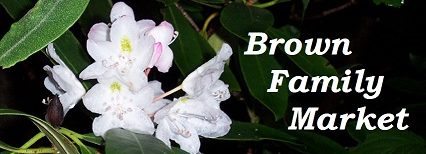Most people think of beer when you mention Germany. While Germans are indeed master brewers, they are also master winemakers. A wine tour in Germany is an ideal way to see the southern half of this wonderful country. You will enjoy German culture and learn about what makes this area so unique in the world of wine. You’ll also see parts of the Wine Country of Germany that many people miss during their visit. Continue reading to learn more.
History of the Wine Country of Germany
The history of wine in Germany starts with the Romans. As the Roman empire expanded into Germany so did vineyards. This was a little over 2,000 years ago. So, they found wild grapes that they chose and cultivated. This created a distinct wine from native grapes. Consequently, after the advent of Christianity, the German church’s monasteries perpetuated vineyard practices and traditions. Throughout the Middle Ages, these monks planted some of the country’s finest vineyard sites. But the church’s vineyards were sold to private landowners after Napoleon’s invasion of Germany. During this period vineyards were present in all regions of Germany. In the 1500s the Germans perfected beer making. Much of the land was reallocated to the production of hops. As well as other beer ingredients. The pinnacle of German winemaking came in the 18th and 19th centuries. The wines of Germany were as widely prized as the wines of France.

Disaster in the Wine Country of Germany
The 20th century almost destroyed the German wine industry with wars, economic upheaval, and also vine diseases. The vine louse phylloxera killed many of the native varieties of grapes. Thus, the introduction of grafting vines on phylloxera-resistant American rootstocks revived German winemaking. This grafting practice was later made mandatory by German Law. In the 1970s a complex series of laws were passed that hurt German wine production. At about the same time, Germany began exporting an inexpensive, sweet white wine that was popular in the UK, US, in addition to other countries. Although no one in Germany drank the wine, Liebfraumilch or its many variations, became popular and it defined German wine during the early 20th century. Germany has seen a renewed interest in its premium wines, most notably Riesling.
In spite of these challenges, Germany remains the 8th largest wine producing country in the world. Dominated by white wine production, but many excellent red wines have been developed.
A Tour of the Wine Country of Germany
This tour will center around the primary rivers of the region. The rivers Ahr, the Rhein, the Mosel, the Saale, the Unstrut, the Elbe, as well as their tributaries. We’ll look at the various regions. Their distinctive wines and also their rich culture. Today, vineyards in Germany grow almost 100 types of grapes. But two white wine grapes have become predominant. They are the Riesling and Muller-Thurgau and makes up over 40% of all plantings. The leading red wine grape is Spatburgunder (Pinot Noir). While known for their white wines, red wines have continued to improve in quality. Many German wines receive rave reviews from critics. Most German wines are excellent values when compared to other premium wines. So, let’s start our tour.
Wine Country of Germany Map
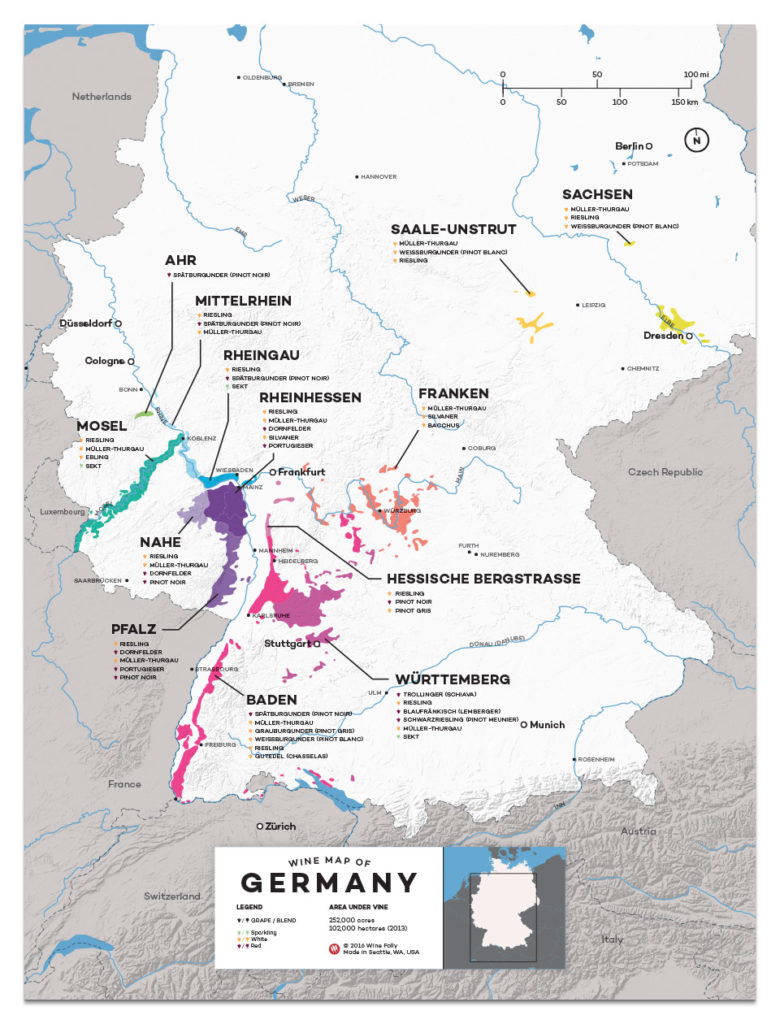
Ahr Region
The first region in alphabetical order is Ahr. This region follows the path of the Ahr River in Western Germany. This is one of the smallest regions of vineyards. The vineyards are perched on the steep banks of the Ahr river which is also a tributary of the Rhein River. The Grape varieties consist of 16.8% white wine grapes and 83.2% red wine grapes. These grape varieties are Spätburgunder (65.1%), Riesling (8.2%), Frühburgunder (6.2%), as well as Müller-Thurgau and Portugieser. Nearly all of this region’s wine is consumed locally. By the natives of the region and also tourists.
Baden Region
This long, slim strip of vineyards is between the Black Forest and the Rhine River in southwest Germany. Baden has many soil types and grape varieties. Nearly half of the vineyards are planted with Burgunder grapes. But Spätburgunder is also grown here yielding velvety-smooth red wine. They also grow Grauburgunder, which produces a dry, food-friendly wine. Weißburgunder is another great wine to accompany a variety of food. This region also has a spicy wine from Gewürztraminer and Riesling grapes which are specialties of the Ortenau district near Baden-Baden. The grape varieties are 59.2% white and 40.8% red and include Spätburgunder (34.3%), Müller-Thurgau (15.4%), Grauburgunder (13.1%), as well as Weißburgunder, Gutedel, and Riesling. This region is a major global exporter of German wines. These wines are often sold in supermarkets, shops, and restaurants.
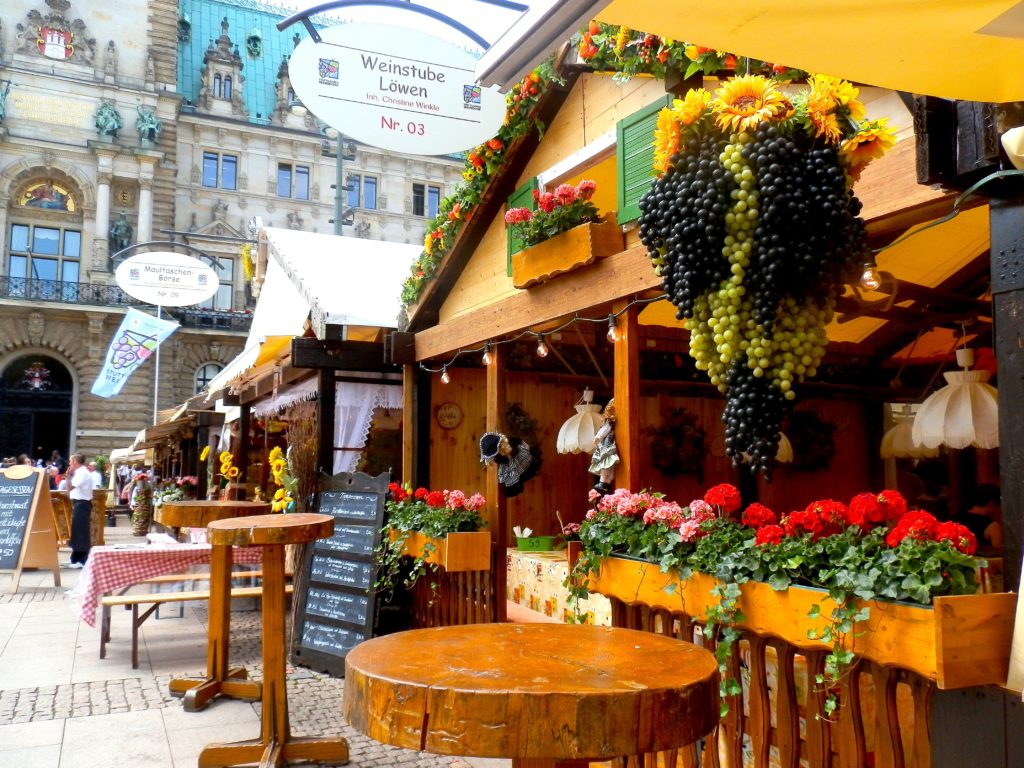
Franken Region
This region is along the Main River. Which, is a tributary east of the Rhine River. The city of Würzburg is also home to the famed vineyard Stein, which gave rise to the generic term Steinwein. In the past, this term was used to denote all Franken wines. This wine is full-bodied, less aromatic, often drier, firmer and earthier than other German wines. These vineyards are on the south-facing slopes lining the Main River and its tributaries. The grape varieties are 81.6% white grapes and 18.4% red and include Müller-Thurgau (25.9%), Silvaner (24.3%), Bacchus (12.2%), as well as Riesling and Kerner. About 4 out of 5 bottles of this region’s wine is consumed locally by natives and tourists but they also export these fine wines.
Hessische Bergstrasse Region
This is a small region that is along an old Roman trade route. The grape varieties boom the earliest in this region of Germany. The vines grown there are Riesling and Grauburgunder. The wines tend to be fragrant and rich, with more body, as well as, acidity and finesse similar to those of the Rheingau. This region is in the center of the wine-growing area of Germany near the Oden Forest. The grape varieties are 79.4% white and 20.6% red including Riesling (42.6%), Grauer Burgunder (11%), Müller-Thurgau (5.4%), as well as Spätburgunder and Silvaner grapes. These wines are almost exclusively consumed by locals.
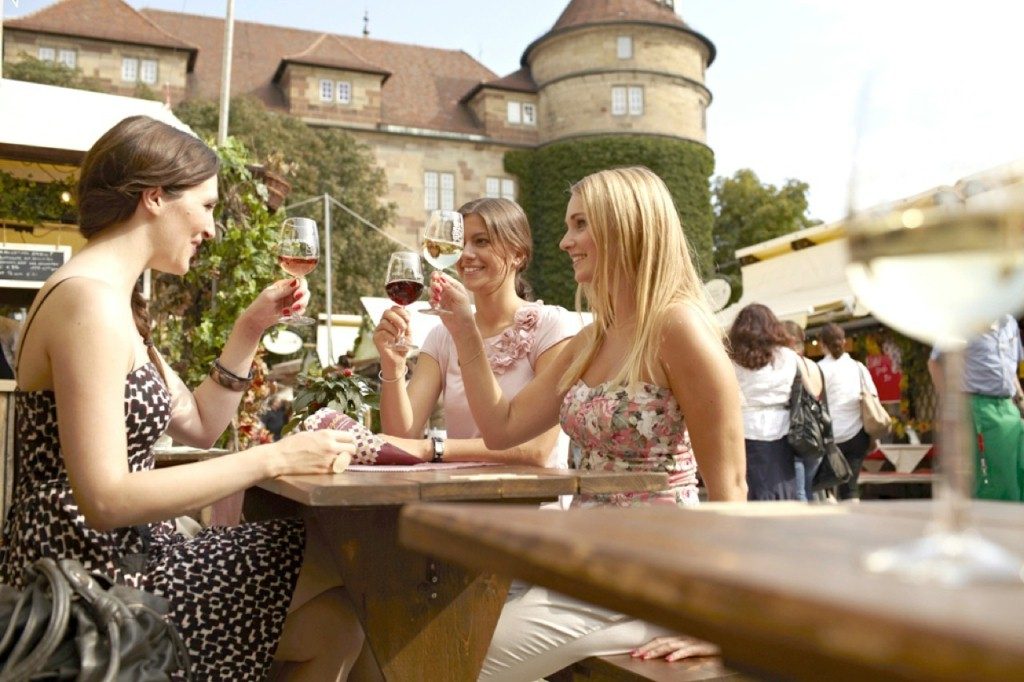
Mittelrhein Region
Mittelrhein is also known as “the Rhine Gorge.” It’s a wine-growing area located along the banks of the Rhine River. It is a beautiful region of steep, terraced vineyards. Also, some of the wine world’s most beautiful scenery is available in this region. It boasts medieval castles and ruins on rocky peaks, as well as, sites of ancient legends. Nearly 66% of the vineyards are planted with the Riesling grapes. The grape varieties are 85.2% white and 14.8% red including Riesling (65.9%), Müller-Thurgau (5.1%) and Spätburgunder (9.4%) grapes. Hence, nearly all of the wine from this region is consumed by locals and tourists.
Mosel Region
The Mosel River Valley is a gorge carved by the river Mosel. It is an excellent wine region of Germany near France. The wine from this region is also light-bodied and has a refreshing, fruity acidity. These wines also often have the slightest hint of effervescence, which makes them even more delightful. The grape varieties used are 90.5% white and 9.5% red and include Riesling (61.5%), Müller-Thurgau (11.2%) and Elbling (5.6%) grapes. Also, this region exports much of the wine it produces.
Nahe Region
This region follows the Nahe River tributary all the way to the Rhine River. The Nahe is one of the smaller German wine regions but its extraordinary range of soil types makes its wines second to none. For this reason, the region is able to produce quite a diverse range of wines from relatively few grape varieties. The grape varieties used are 75.8% white and 24.2% red and include Riesling (28.7%), Müller-Thurgau (12.6%), Grauburgunder (7.5%), as well as Silvaner, Bacchus and Kerner grapes. This region’s wine is sold directly to customers. They possess one of the world’s largest direct marketing wineries, WIV in Burg Layen.
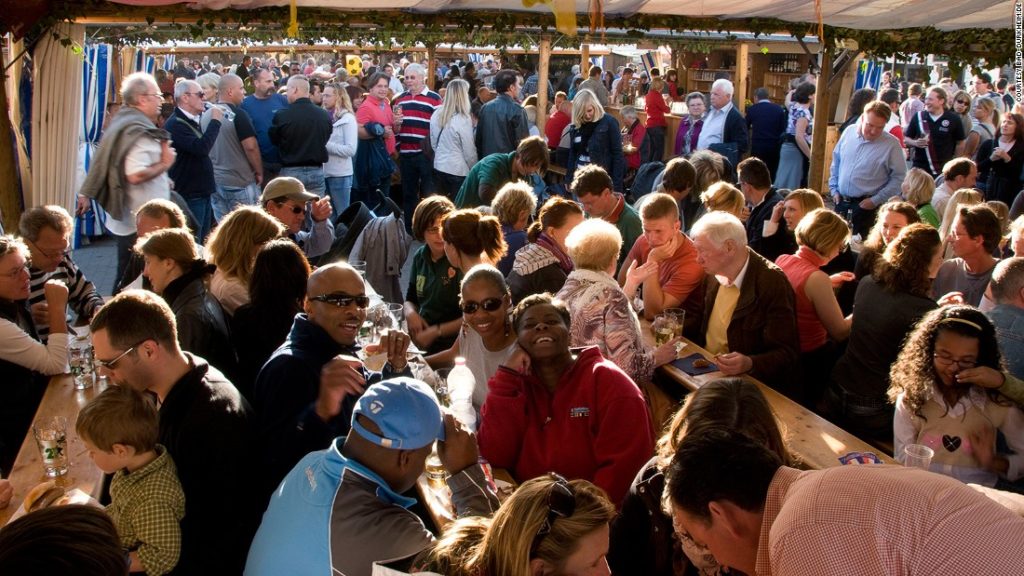
Pfalz Region
Nestled between the city of Rheinhessen to the north and France to the southwest, the Pfalz’s vineyards sweep along the Rhine River. This is the second-largest wine region, but often has the smallest crops of grapes due to the proximity to industry. Yet, they produce pleasant, mild white wines rich in bouquet and full of body from the Riesling and Müller-Thurgau grapes. As well as deep-colored and complex red wines made from Dornfelder grapes. The grape varieties are 64.9% white and 35.1% red and include the Riesling (24.8%), Dornfelder (12.5%), Müller-Thurgau (8.3%), Spätburgunder (7.1%), as well as Grauburgunder, Portugieser, Weißburgunder, Kerner and Chardonnay grapes. They create much of this region’s wine for export.
Rheingau Region
Rheingau is one of the most distinguished wine regions in the world. Situated from east to west along the Rhine River. It’s also a beautiful region, rich in tradition. Its medieval priestly and aristocratic wine-growers used the noble Riesling grape. Also, in the 18th century, they recognized the value of harvesting the grape crop at various stages of ripeness from which the Prädikate, variety of wines evolved. Queen Victoria was especially fond of Hochheim’s wines which contributed to their popularity in England. The two dominant grape varieties are the Riesling and the Spätburgunder.
The Riesling yields elegant wines with a refined and occasionally spicy fragrance and a rich flavor. The Spätburgunder grapes yield a wine with a velvety and medium to full-bodied bouquet and taste. As a result, they are often compared with blackberries. The grape varieties are 85.5% white and 14.5% red including Riesling (78.3%), Spätburgunder (12.2%) as well as Müller-Thurgau and Ehrenfelser grapes. They bottle wine from this region for both domestic and export markets.
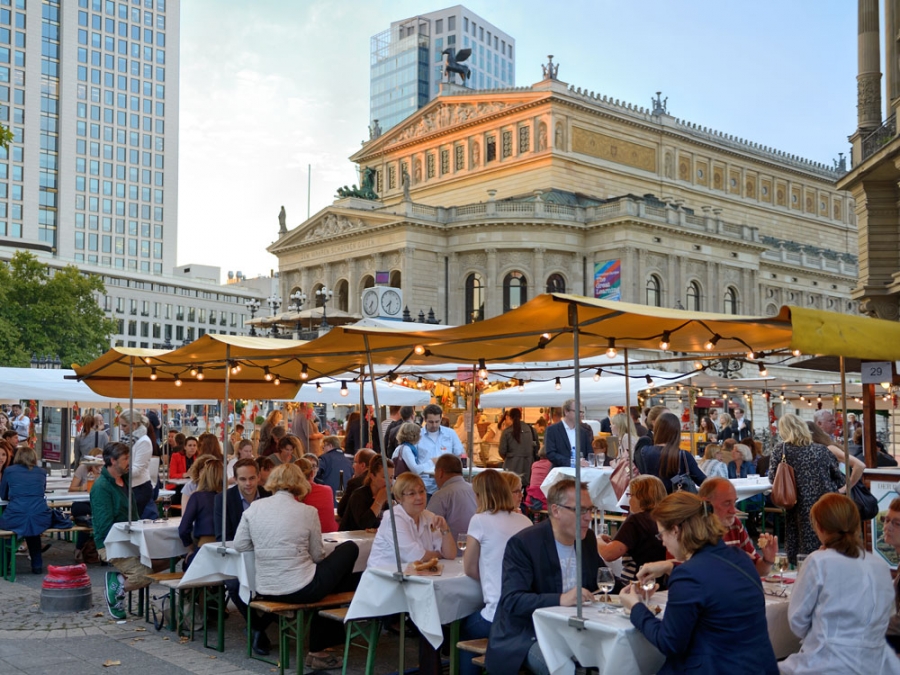
Rheingau Wine Fest
Rheinhessen Region
Germany’s largest wine-producing region. The Rheinhessen region is directly south of the Rheingau region, nestled within a huge bend in the Rhine River. Hence, the varied soil types and the favorable climate make it possible to grow many grape varieties. The region boasts the world’s largest acreage planted with the ancient variety of grape called Silvaner. This region is also the birthplace of Liebfraumilch. It is a mellow white wine originally made from grapes grown in vineyards surrounding the Liebfrauenkirche. Which is German for Church of Our Lady, in the city Worms. Due to the soil and climate this region produces wines of great class and elegance, with depth and complexity second to none.
The grape varieties are 70.9% white and 29.1% red and include Riesling (17.4%), Müller-Thurgau (16.1%), Dornfelder (12.6%) as well as Silvaner, Grauburgunder, Spätburgunder, Weißburgunder, Portugieser and Kerner grapes. This region produces wine for both domestic consumption and export. Consequently, exporting about one-third of its wine.
Saale-Unstrut Region
This region is in southeast Germany along the Saale and Unstrut rivers. Vines have been cultivated since AD 998 on the hillsides along the Saale and the Unstrut rivers. Yields are low due to the cooler climate and rocky soil. The wines are dry, with refreshing acidity. The grape varieties are 74.5% white and 25.6% red including Müller-Thurgau (14.8%), Weißburgunder (14%), Riesling (8.9%), as well as Silvaner, Bacchus, Grauburgunder, Kerner and Dornfelder grapes. Locals consume nearly all of the wine from this region.
Sachsen Region
This is the Easternmost region of wine production in Germany. Nestled along the Elbe River just north of the Czech Republic border. This is also the smallest wine-growing region in Germany. Its history of vineyards dates from 1161 and also has a history of the Church and its medieval aristocracy as vineyard owners. The growing conditions are similar to those of the Saale-Unstrut region. So, they market Sachsen wines as single grape dry wines. The grape varieties are 81.9% white and 18.1% red including Müller-Thurgau (14.5%), Riesling (14.3%), Weißburgunder (11.9%) as well as Kerner, Gewürztraminer and Scheurebe grapes. Locals consume nearly all the wine produced in this region.
Württemberg Region
The region surrounding the Neckar River, which is a tributary of the Rhine. The home of the “Cliff Gardens” with more than half of its vineyards planted with red wine varieties. Württemberg is also Germany’s premier red wine region. Most of the wines from this region are light, fruity and easy to enjoy. But they also produce deep-colored, rich, full-bodied red wine with great class. The grape varieties are 31.3% white and 68.7% red including Trollinger (19%), Riesling (18.7%), Lemberger (15.1%), Schwarzriesling (12.5%), Spätburgunder (11.7%) as well as Müller-Thurgau and Kerner grapes. Locals consume much of the wine but they do have a lively export market for this region’s fine wine.
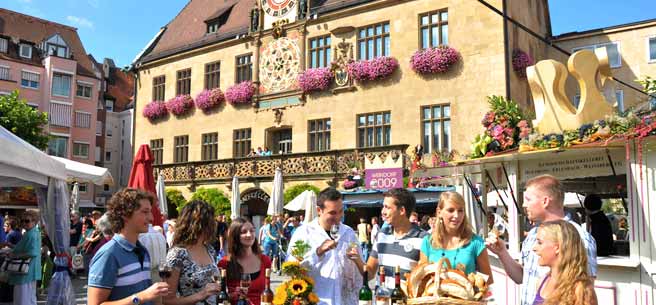
After the Tour of the Wine Country of Germany
This was a brief trip through the various wine regions of Germany. There is much more to learn about this wonderful wine-producing country. In conclusion, let me leave you with a list of the German wines compiled by Culture Trip. According to Brienne Pierce on Nov 2016, this is a list of wines that you need to taste, as well as, drink to really understand the depth of German fine wine.
- Riesling ‘La Roche’ 2013 from Baeder
- Spätburgunder Blanc de Noir 2014 from Baeder
- Grauburgunder 2014 from GROH
- Sauvignon Blanc 2014 from GROH
- EINS ZWEI DRY Riesling 2014 from Leitz
- Spätburgunder 2013 from Thorsten Krieger
- Pinot Noir Rosé 2014 from Leitz
- Gewürztraminer 2014 from Elena Walch
Wine Country of Germany References
Deutsches Weininstitut GmbH. “Wine Growing Regions.” Wines of Germany. Last modified January 21, 2019. https://www.germanwines.de/tourism/wine-growing-regions/.
Pierce, Brienne. “The Top German Wines You Should Be Drinking.” Culture Trip. Last modified November 28, 2016. https://theculturetrip.com/europe/germany/articles/8-german-wines-you-should-be-drinking/.
“Wineries in Germany | Mosel, Pfalz, Rheinhessen Wineries | World Wide Wine Tours.” Wine Tours Worldwide | Wine Tour Operators, Wine Tasting Vacations. Accessed April 25, 2019. https://www.worldwidewinetours.com/germany/german-wineries/.
Tour of the Wine Country of Germany
I hope this article and list helps you enjoy the rich history and fabulous fine wines of Germany. I also wrote a similar article about the fine wines of France and you can see it by visiting HERE. Let me also leave you with a traditional German toast or in German Prost. Raise your glass and exclaim:
